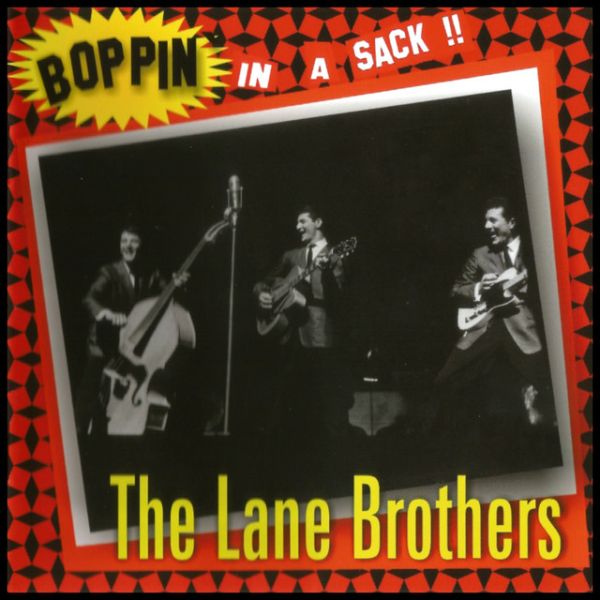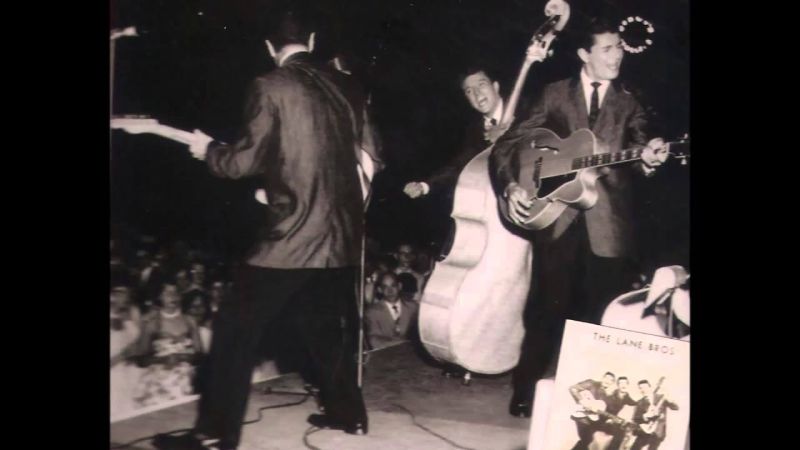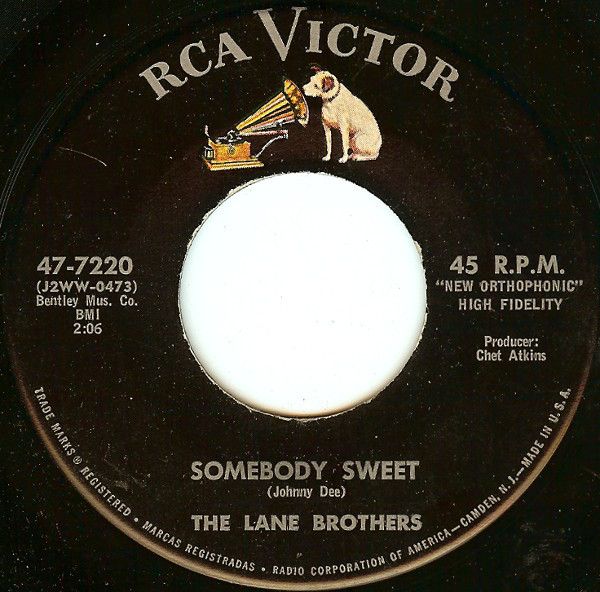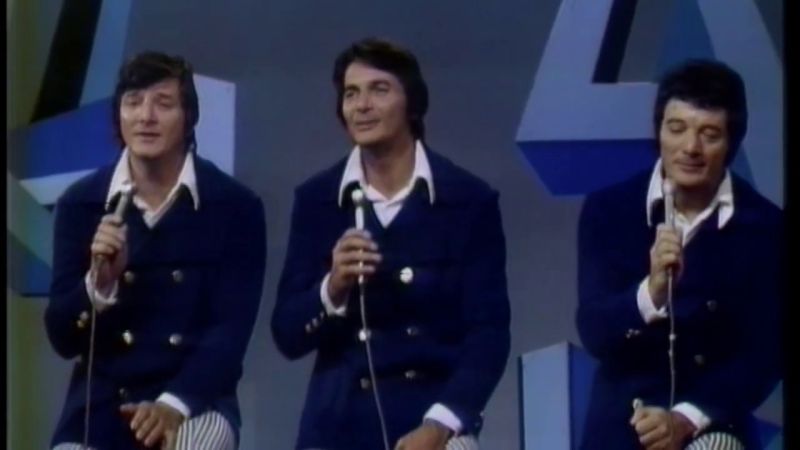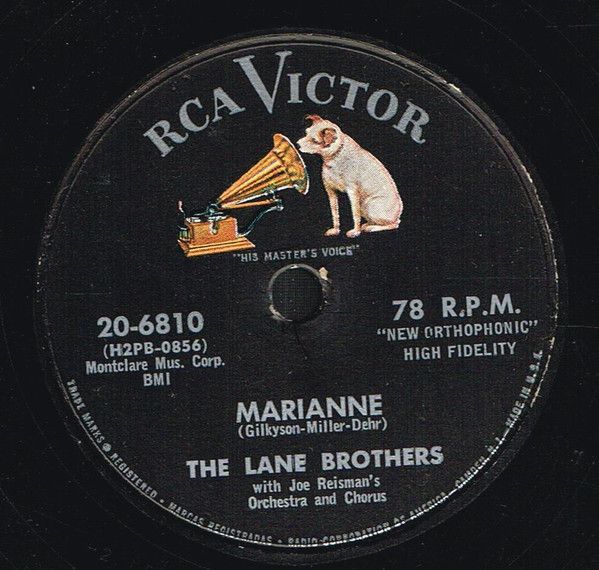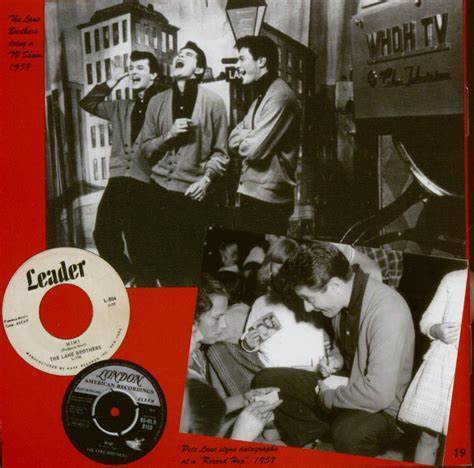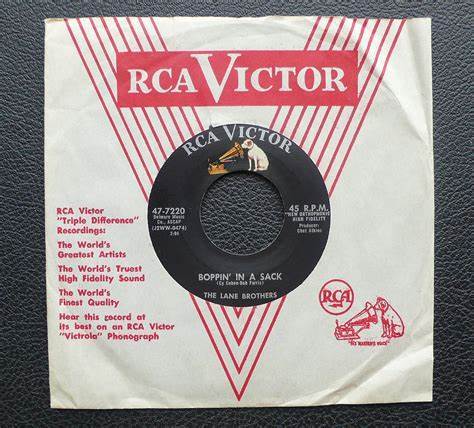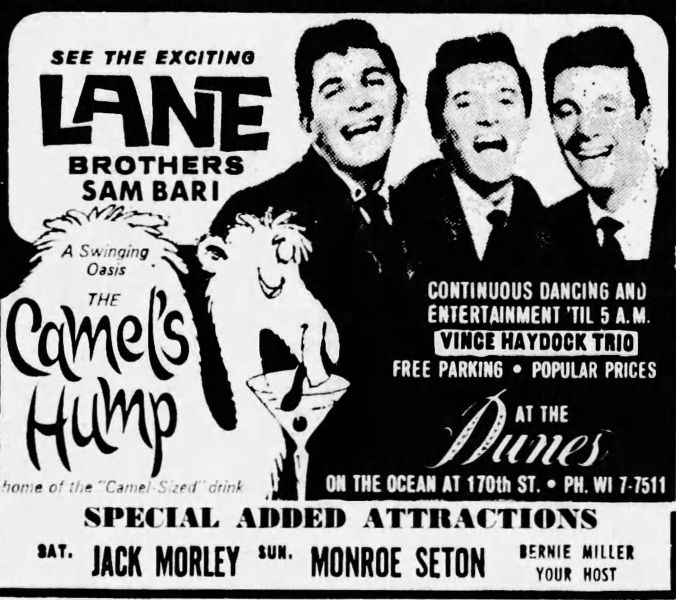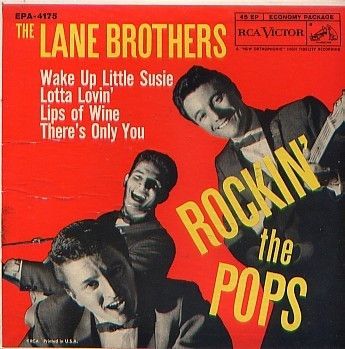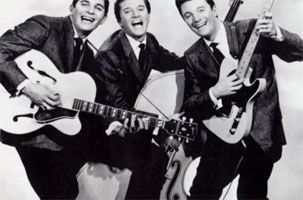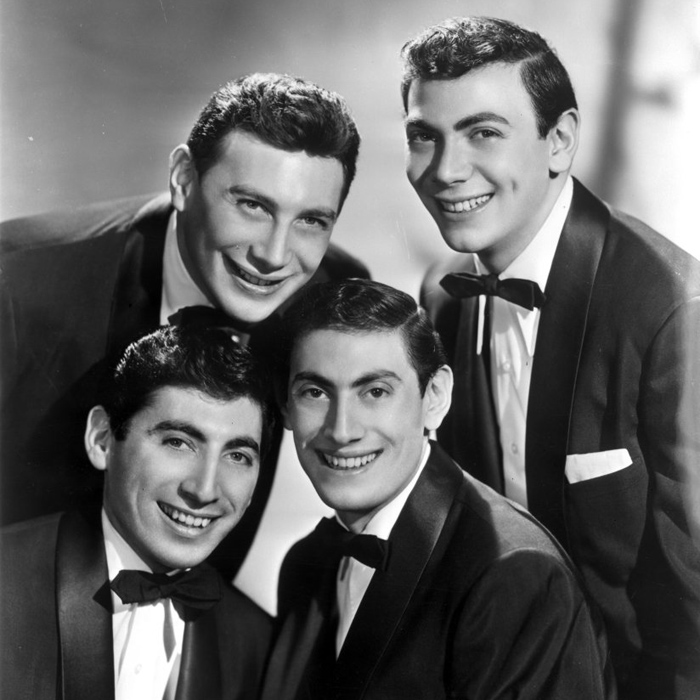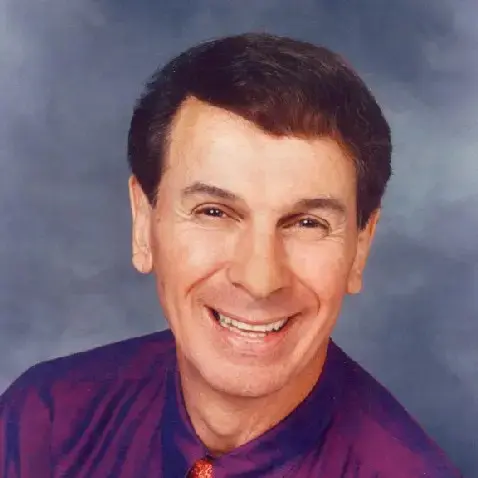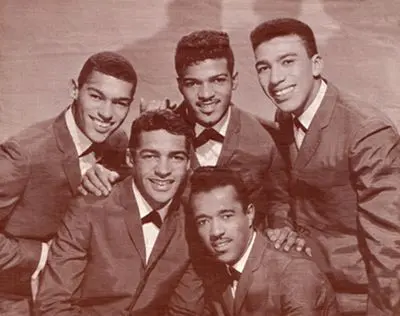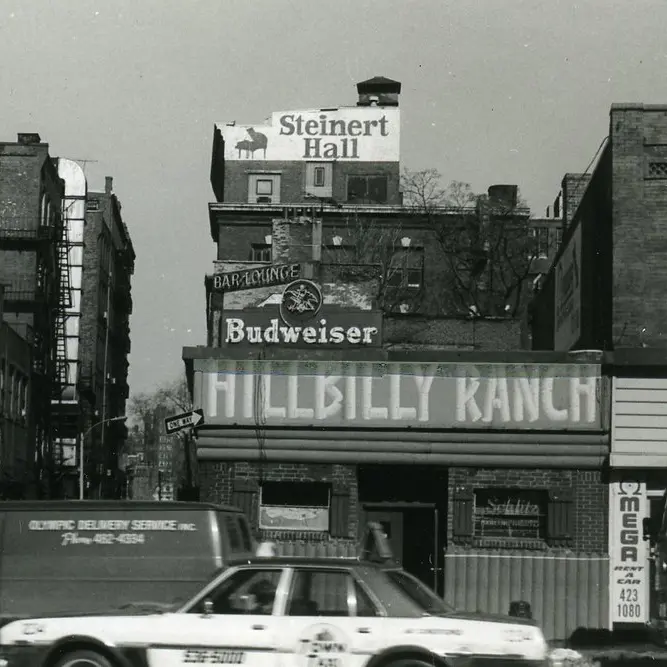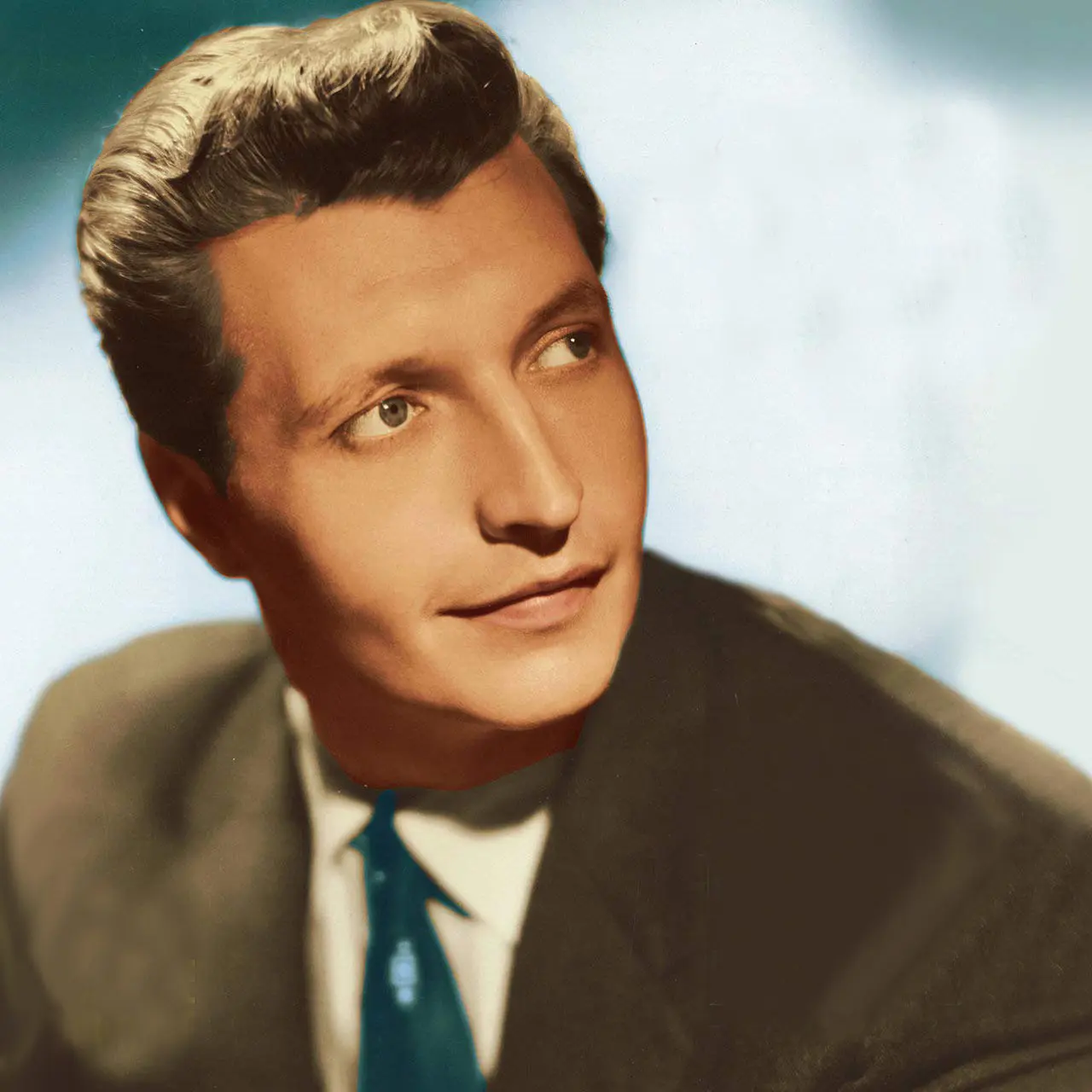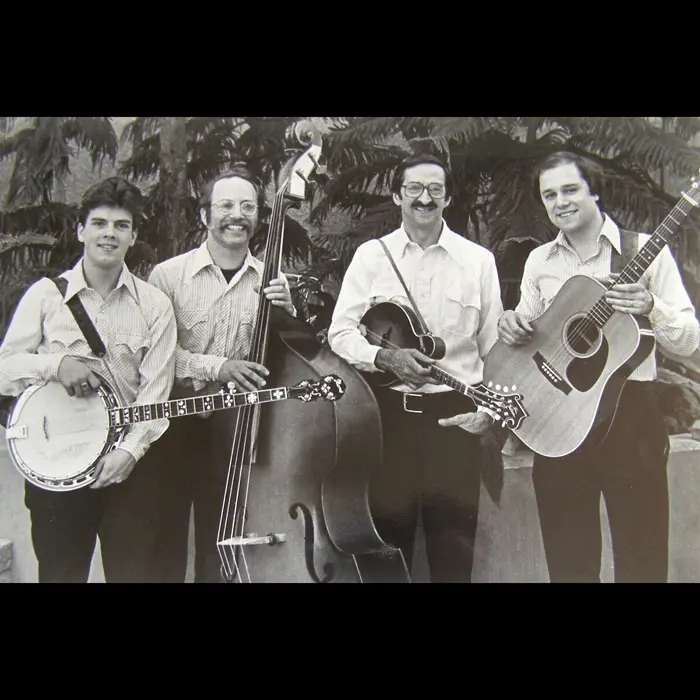The Lane Brothers
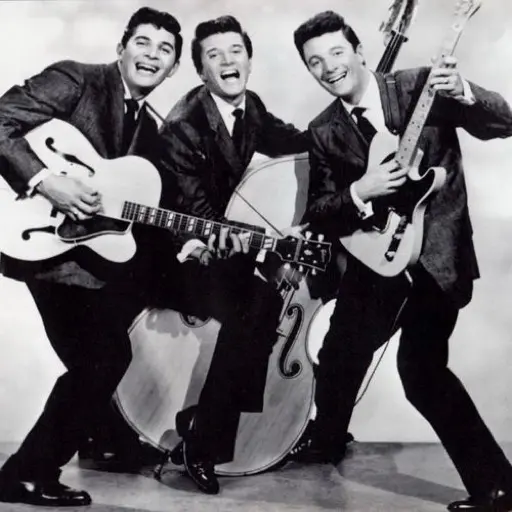
By blending the hit-making harmonies of other Boston-area family singing groups like The Ames Brothers of Malden and The G-Clefs of Roxbury with the rockabilly rhythms of Freddy “Boom Boom” Cannon of Lynn, The Lane Brothers cooked up a simultaneously sweet and scorching sonic stew. And in the late 1950s, they were one of the best-selling items on mainstream America’s rapidly expanding rock-and-roll menu.
A fine-tuned music-making machine whose versatility allowed them to shapeshift from a golden-voiced pop-country trio into a rockabilly force backed by some of the most respected session players in Nashville – where they recorded their biggest hit in the same studio Elvis used – the fraternal trio from Cambridge was a pristinely polished and consistently crowd-thrilling act during their nearly 40 years together. Among New England’s most noteworthy musical exports, the group toured North America and Europe as headliners and opened for some of the most chart-topping acts in history.
Musical Beginnings
The group was comprised of three of the Loconto family’s ten children, Pete (b. 1924), Frank (b. 1931) and Art (b. 1933), whose extended family had something of a musical pedigree: Their cousin, Jerry Gray, had arranged scores for Artie Shaw, a Connecticut native, including the clarinetist-bandleader’s seminal rendition of Cole Porter’s “Begin The Beguine” that topped the charts in 1938. Gray wrote a number of iconic big-band songs as well, including Glenn Miller’s hits “String of Pearls” and “Pennsylvania 6-500,” and from a young age the brothers listened to an eclectic range of music from big-band to country-western. “Cambridge was a city of mixed cultures and music,” according to Frank, who began writing songs around age 10.
Formation, Growing Popularity
In 1947, 23-year old Pete and 16-year old Frank formed a singing duo with Frank on rhythm guitar and harmonica and Pete playing lead on electric Spanish guitar. They performed at local schools, CYO events and private functions before 15-year old Art joined the group on bass and vocals in 1948 and they became The Lane Brothers, appearing regularly at Boston-area nightspots including the Mohawk Ranch, where they met country-bluegrass fiddler Tex Logan, a born-and-raised Texan who was studying at MIT and who played with the group often, billed as “The Lane Brothers and Logan.”
By the end of 1948, The Lane Brothers had made national television appearances on Toast of the Town (before it was renamed The Ed Sullivan Show in 1955) and The Milton Berle Show, and in 1950 they were the debut act on the opening night of the Hillbilly Ranch in Boston, where they performed frequently while appearing live multiple times on WCRB in Waltham and the pioneering WCOP (now WZLX) radio program “Hayloft Jamboree.”
Hiatus, Reunion, Paul Grossinger
From 1952-53, the Loconto brothers’ musical ambitions were interrupted in a particularly Cold War-era way when Frank was drafted into the Army and spent a year in Korea during the height of the three-year war there, followed by Art being drafted and spending a year in Germany, where there was no war and he sang in a GI group. During that time, Pete – past the maximum draft age at 28 – landed a solo deal with Imperial Records, recording two 7” singles for the label.
In late 1954, the reunited Loconto brothers resumed performing at Boston-area venues including the Hillbilly Ranch, where singer-banjoist and local bluegrass legend Joe Val sat in occasionally. In a pivotal career move, they hired as their manager Catskills-resort entrepreneur Paul Grossinger, who helped them build a refined, nightclub-suitable stage routine and over the next two years his hands-on approach turned the brothers into a remarkably adaptable on-stage powerhouse with proficiency and professionalism far beyond their earlier years.
Signing with RCA, “Marianne”
In 1956, thanks to the Loconto’s polish and Grossinger’s contacts, RCA Records’ A&R chief Joe Carlton signed the group before being replaced in 1957 by Steve Sholes, who sent The Lane Brothers to Nashville to record a cover of the newly released Terry Gilkyson and The Easy Riders’ song “Marianne,” which had hit #4 in the charts. In March that year, The Lane Brothers’ rendition reached #64 in the Billboard Hot 100.
In June 1957, RCA released the group’s second single, Lee Bond’s “Uh-Uh Honey” b/w “Ding Dong Danglin’,” which didn’t chart, followed by a four-song EP, The Lane Brothers Rockin´ The Pops, that included their renditions of The Everly Brothers “Wake Up Little Susie,”, Gene Vincent’s “Lotta Lovin’,” Don Rondo’s “There’s Only You” and Andy Williams’ “Lips Of Wine.” None of them charted, making it obvious that something about the group’s sound had to change for them to recapture the public’s attention.
Shift to Rockabilly
And change they did, in early 1958. Then ages 33, 26 and 24 respectively and under enormous pressure from RCA to deliver a second hit, the brothers shifted gears from balladry to rockabilly – which they’d been playing for years across New England – and the result was spectacular. In March they recorded their biggest hit, “Boppin’ in a Sack” (now a staple on rockabilly collections), in Studio B at RCA Studios in Nashville – where Elvis Presley had recorded several of his classics – with RCA’s Sholes and country legend Chet Atkins as producers. The track features first-call Nashville session cats including saxophonist Dutch McMillin, whose roaring riffs propel the song.
“Boppin’ in a Sack”
In May 1958, “Boppin in a Sack” hit #53 in the US, made Canada’s Top 100 and reached #4 in Australia, establishing The Lane Brothers as an international act. Interestingly, though modern listeners may misconstrue the song’s title as a sexual euphemism, actually it refers to dancing while wearing a “sack dress,” a precursor to mini-skirts that were wildly popular at the time and the subject of other songs that year including The Beavers’ “Sack Dress” and Whistling Alexander Moore’s “Pretty Woman With A Sack Dress.”
For nearly two years, The Lane Brothers were one of pop music’s most in-demand groups, filling major clubs and arenas, appearing on American Bandstand and The Tonight Show and opening for megastars like Bobby Darin, The Everly Brothers, Connie Francis, Frankie Avalon and Chuck Berry. RCA released a string of new singles to capitalize on the momentum, but none made the charts and the label dropped the band in late 1959.
Leader Records, Later Appearances, Compilation
In 1960, with Bobby Darin’s help, the brothers signed with Leader Records and recorded Frank’s original “Two Dozen And A Half” with members of the Count Basie Orchestra, but the group’s charting days were finished. They became a regular act on cruise ships, played across Europe on US military bases and in 1964 relocated to Florida where they performed at conventions and supper clubs before releasing several more non-charting singles in 1969.
After spending the 1970s in semi-retirement, the brothers re-recorded “Marianne” and some other songs in 1981 before ending both their recording and performing days together in the mid-1980s. In 2008, Fury Records released the 29-track compilation Boppin’ In A Sack!! featuring a 32-page booklet of rare photos and information about the group.
POST-LANE BROTHERS ACTIVITY
Frank, now age 92 and living in the Ft. Lauderdale area, continues to perform as a soloist has produced several albums, including one of Irish songs sung by the late Massachusetts Congressman Tip O’Neill. Since 1984, he has been the producer and host of the public policy TV program Countyline on Florida’s WBEC. In 2007, Radio Records issued a 36-song collection of his originals, Singing Rosary, which has become a mainstay in Catholic homes and churches across North America. Pete died in 1998 at age 74, followed by Art in 2018 at age 85.
(by D.S. Monahan)

